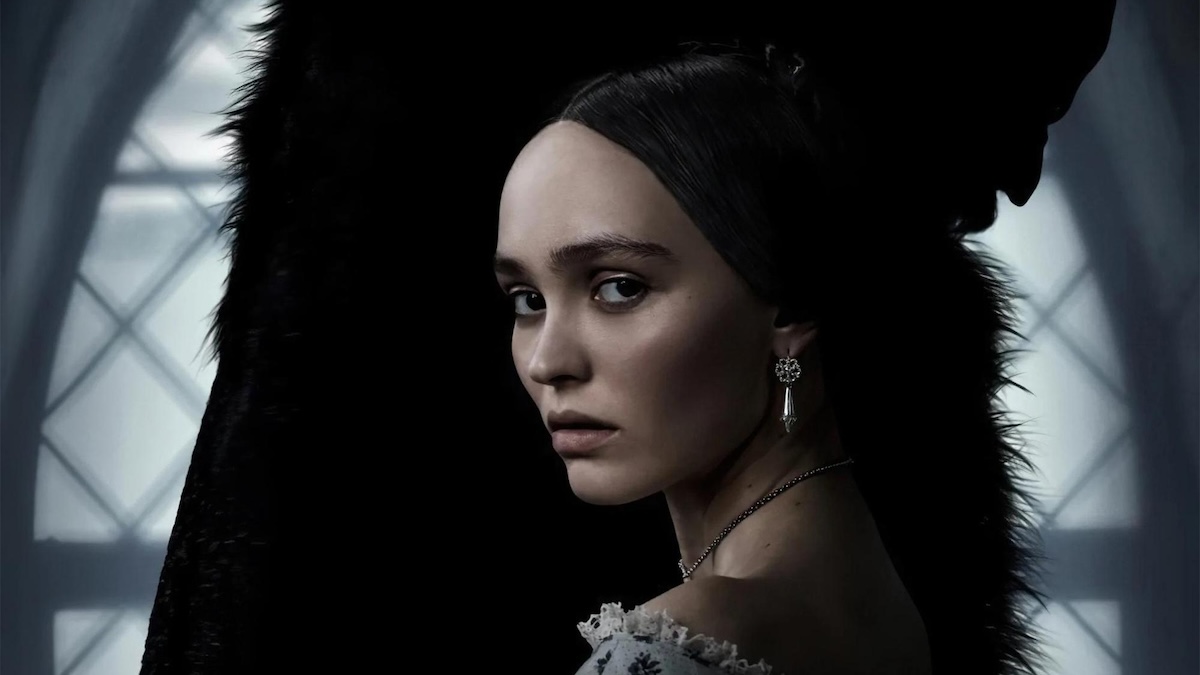Nosferatu Explained: Dive into the chilling world of F.W. Murnau’s groundbreaking silent film. We’ll unpack the historical context that birthed this cinematic masterpiece, exploring the societal anxieties and artistic movements that shaped its unique vision. From Count Orlok’s unsettling presence to the film’s masterful use of shadows and expressionism, we’ll unravel the mysteries and enduring impact of Nosferatu.
This exploration will delve into the film’s themes of isolation, obsession, and the seductive power of the supernatural, comparing and contrasting Nosferatu’s portrayal of vampirism with other iterations of the myth. We’ll analyze the characters of Hutter and Ellen, examining their individual journeys and their fateful encounters with the undead Count. Prepare to be captivated by the visual storytelling, the symbolism woven into every frame, and the lasting legacy of this iconic horror film.
Nosferatu’s Historical Context
F.W. Murnau’s 1922 masterpiece, Nosferatu, wasn’t just a horror film; it was a product of its time, reflecting the anxieties and cultural shifts of post-World War I Germany. The film’s themes of disease, death, and societal collapse resonated deeply with a nation grappling with the trauma of war and the rise of a new, uncertain order.
Societal Anxieties and Cultural Influences
The Weimar Republic, established after the war, was a period of intense social and political upheaval. Hyperinflation ravaged the economy, leading to widespread poverty and instability. The film’s depiction of a plague-like disease spreading through the town mirrors the anxieties surrounding the spread of disease and social unrest in post-war Germany. The film also reflects the pervasive sense of dread and uncertainty that permeated German society during this period.
Bram Stoker’s Dracula and its Influence
While Nosferatu is an unauthorized adaptation of Bram Stoker’s Dracula, its influence is undeniable. Murnau draws heavily from Stoker’s novel, retaining key plot points and characters, albeit with significant alterations. The character of Count Orlok, for instance, shares many similarities with Dracula, yet possesses a unique visual and psychological presence. The overall narrative structure, the journey to Transylvania, and the vampire’s vulnerability to sunlight are all clear echoes of Stoker’s work.
However, Murnau’s stylistic choices, influenced by German Expressionism, drastically alter the atmosphere and tone of the original novel.
Comparing Nosferatu’s Vampire with Contemporary Depictions
Unlike the seductive and aristocratic vampires that would later dominate the genre, Orlok is a grotesque and unsettling figure. Contemporary depictions often emphasized the vampire’s charisma and supernatural allure, whereas Orlok is presented as a force of pure, malignant evil. His physical appearance – gaunt, rat-like, and decaying – reinforces this image of pure horror, setting him apart from the more romanticized vampires that followed.
Timeline of Key Influences
A timeline illustrates the historical and artistic forces that shaped Nosferatu:
| Date | Event/Movement | Influence on Nosferatu |
|---|---|---|
| 1897 | Publication of Bram Stoker’s Dracula | Source material for the narrative and character archetypes. |
| 1914-1918 | World War I | Created a climate of anxiety and uncertainty reflected in the film’s themes. |
| 1918-1933 | Weimar Republic | The socio-political instability of the era is mirrored in the film’s atmosphere. |
| 1910s-1920s | German Expressionism | Highly influential in the film’s visual style and use of lighting and shadow. |
| 1922 | Release of Nosferatu | A landmark achievement in horror cinema, setting a precedent for future vampire films. |
Analysis of Count Orlok’s Character: Nosferatu Explained
Count Orlok, the vampire in Nosferatu, is far from the suave, aristocratic vampire often depicted in later films. His appearance and actions are designed to inspire revulsion and terror, a key element in the film’s success.
Orlok’s Physical Appearance and Atmosphere of Dread
Orlok’s physical appearance is crucial to the film’s overall effect. His gaunt features, elongated fingers, sharp teeth, and rat-like qualities create a figure of unsettling grotesqueness. The stark lighting and dramatic shadows used in the film further enhance this unsettling effect, making Orlok appear even more monstrous and inhuman. His unnatural movements and eerie stillness add to the overall feeling of dread and unease.
Distinguishing Orlok from Traditional Vampire Portrayals
Unlike the seductive vampires of later films, Orlok lacks charisma and charm. He is a creature of pure malice, driven by a primal hunger. His actions are brutal and devoid of any romantic or aristocratic pretense. This stark contrast with later vampire portrayals makes Orlok a truly terrifying and unforgettable antagonist.
Orlok’s Motivations and Internal Conflicts
Orlok’s motivations seem to be purely instinctual: a relentless thirst for blood and the spreading of his curse. While lacking the complexities of later vampire characters, there’s a sense of ancient, inescapable fate about him. He is a force of nature, an embodiment of death and decay, rather than a character with internal struggles in the traditional sense. His actions are driven by his vampiric nature, not by conscious choice or internal conflict.
Symbolism Associated with Orlok
Orlok’s physical attributes are laden with symbolism. His elongated fingers and claws symbolize death’s grasp, while his rat-like features associate him with disease and decay. His shadow, often looming large and distorted, represents the encroaching darkness and the ever-present threat of his presence. The stark contrast between his pale skin and the dark, shadowed backgrounds emphasizes his otherworldliness and detachment from humanity.
Themes and Motifs in Nosferatu
Nosferatu is not merely a horror story; it’s a powerful exploration of several profound themes, woven together through recurring motifs of disease, death, and decay. These elements work in concert to create a chilling and unforgettable cinematic experience.
Motifs of Disease, Death, and Decay
The film is saturated with imagery of disease, death, and decay. The plague that ravages Wisborg mirrors the physical deterioration of Orlok himself, symbolizing the spread of corruption and destruction. The decaying architecture and desolate landscapes reinforce the overall sense of decline and impending doom. These motifs are not merely visual; they reflect the societal anxieties of post-war Germany.
Key Thematic Concerns: Isolation, Obsession, and Supernatural Power
Nosferatu explores the themes of isolation, obsession, and the overwhelming power of the supernatural. Hutter’s isolation in the eerie castle and his growing obsession with Orlok highlight the vulnerability of humanity in the face of supernatural evil. Orlok’s relentless pursuit of Ellen emphasizes the destructive nature of obsession and the unstoppable force of the supernatural.
Comparing the Roles of Hutter and Ellen
Hutter, initially driven by ambition, becomes a pawn in Orlok’s sinister game. His journey is one of gradual descent into horror and despair. Ellen, on the other hand, represents innocence and self-sacrifice. Her unwavering love for Hutter and her ultimate act of defiance against Orlok showcase the power of human compassion and resilience against overwhelming evil. Their contrasting journeys highlight the different ways humans confront the supernatural.
Symbolic Elements in Nosferatu, Nosferatu Explained
| Symbol | Scene | Interpretation | Significance |
|---|---|---|---|
| Rats | Orlok’s arrival in Wisborg | Disease, decay, the spread of evil | Highlights Orlok’s destructive nature |
| Shadows | Throughout the film | Fear, the unknown, the looming presence of death | Creates a constant atmosphere of dread |
| Sunlight | Orlok’s aversion to it | Life, purity, the vulnerability of evil | Underlines Orlok’s unnatural nature |
| Ellen’s Sacrifice | Final scene | The triumph of love and sacrifice over evil | Provides a cathartic resolution, albeit a tragic one |
The Film’s Visual Style and Cinematography
Nosferatu‘s visual style is a cornerstone of its enduring power. The film’s use of shadows, lighting, and camera angles creates a unique atmosphere of suspense and dread, profoundly impacting the viewer.
When investigating detailed guidance, check out hair extensions sally beauty now.
Shadows, Lighting, and Camera Angles
Murnau masterfully employs chiaroscuro, a stark contrast between light and shadow, to create a visually striking and unsettling atmosphere. Shadows are used to distort figures, creating a sense of unease and foreboding. Low-angle shots emphasize Orlok’s imposing presence, while high-angle shots portray Hutter’s vulnerability. The use of deep shadows and stark contrasts contributes significantly to the film’s expressionistic style.
Expressionistic Techniques and Overall Impact
The film’s heavy use of expressionistic techniques, characterized by distorted sets, exaggerated lighting, and symbolic imagery, contributes significantly to its unsettling atmosphere. These techniques move beyond mere realism, creating a nightmarish world that reflects the psychological state of the characters and the anxieties of the time. The viewer is not merely observing the events; they are experiencing a visceral, emotional response to the film’s unsettling visuals.
Significance of Specific Scenes
Source: colliderimages.com
The scene where Orlok climbs the walls of Wisborg is a prime example of the film’s visual storytelling. The unnatural, almost spider-like movements of Orlok, coupled with the distorted perspective of the buildings, create a powerful image of creeping dread and impending doom. The scene where Ellen is attacked in her bedroom uses sharp cuts and extreme close-ups to heighten the sense of terror and vulnerability.
Key Visual Elements Enhancing Horror and Suspense
- Distorted sets and exaggerated perspectives
- Chiaroscuro lighting and dramatic shadows
- Unnatural and unsettling camera angles
- Extreme close-ups and sharp cuts
- Use of symbolic imagery, such as rats and decaying architecture
Nosferatu’s Legacy and Influence
Nosferatu‘s impact on the horror genre and subsequent vampire films is undeniable. Its unique visual style and narrative structure continue to inspire filmmakers to this day.
Lasting Impact on the Horror Genre
Nosferatu is considered a foundational text in the horror genre, establishing many visual and thematic conventions that have been imitated and reinterpreted in countless films. Its influence can be seen in the way subsequent vampire films utilize shadows, lighting, and distorted imagery to create a sense of dread and unease. The film’s exploration of themes like isolation, obsession, and the power of the supernatural remains relevant and impactful.
Imitated and Reinterpreted Elements
Many elements of Nosferatu have been directly imitated or reinterpreted in later works. The grotesque appearance of Orlok has influenced the visual design of countless vampire characters, while the film’s use of expressionistic techniques continues to inspire filmmakers seeking to create a unique and unsettling atmosphere. The narrative structure, particularly the journey to a remote location and the vulnerability of the protagonist, has also been replicated in various horror and thriller films.
Influence on Modern Filmmaking
Nosferatu‘s influence extends beyond the horror genre. Its innovative use of cinematic techniques, such as shadow play and unconventional camera angles, has had a lasting impact on the art of filmmaking in general. The film’s emphasis on visual storytelling and its ability to evoke powerful emotional responses through imagery and atmosphere continue to inspire filmmakers striving for cinematic excellence.
Descriptive Account of a Specific Scene
The scene where Orlok enters Wisborg at night is a masterclass in visual storytelling. The use of low-angle shots emphasizes Orlok’s imposing height, while the shadows and distorted perspectives of the buildings create a sense of unease and foreboding. The slow, deliberate movements of Orlok, combined with the eerie silence, build suspense and create a palpable sense of dread.
The scene’s visual composition effectively communicates the imminent threat and the helplessness of the townspeople facing the approaching evil.
Conclusive Thoughts

Source: comicbookmovie.com
Ultimately, Nosferatu transcends its status as a mere horror film; it’s a powerful reflection of its time and a testament to the enduring power of cinematic artistry. From its chilling visuals and unsettling atmosphere to its exploration of universal themes, Nosferatu continues to resonate with audiences today, proving its position as a cornerstone of the horror genre and a masterpiece of German Expressionism.
Its influence on subsequent vampire films and horror cinema as a whole is undeniable, cementing its place in cinematic history.



